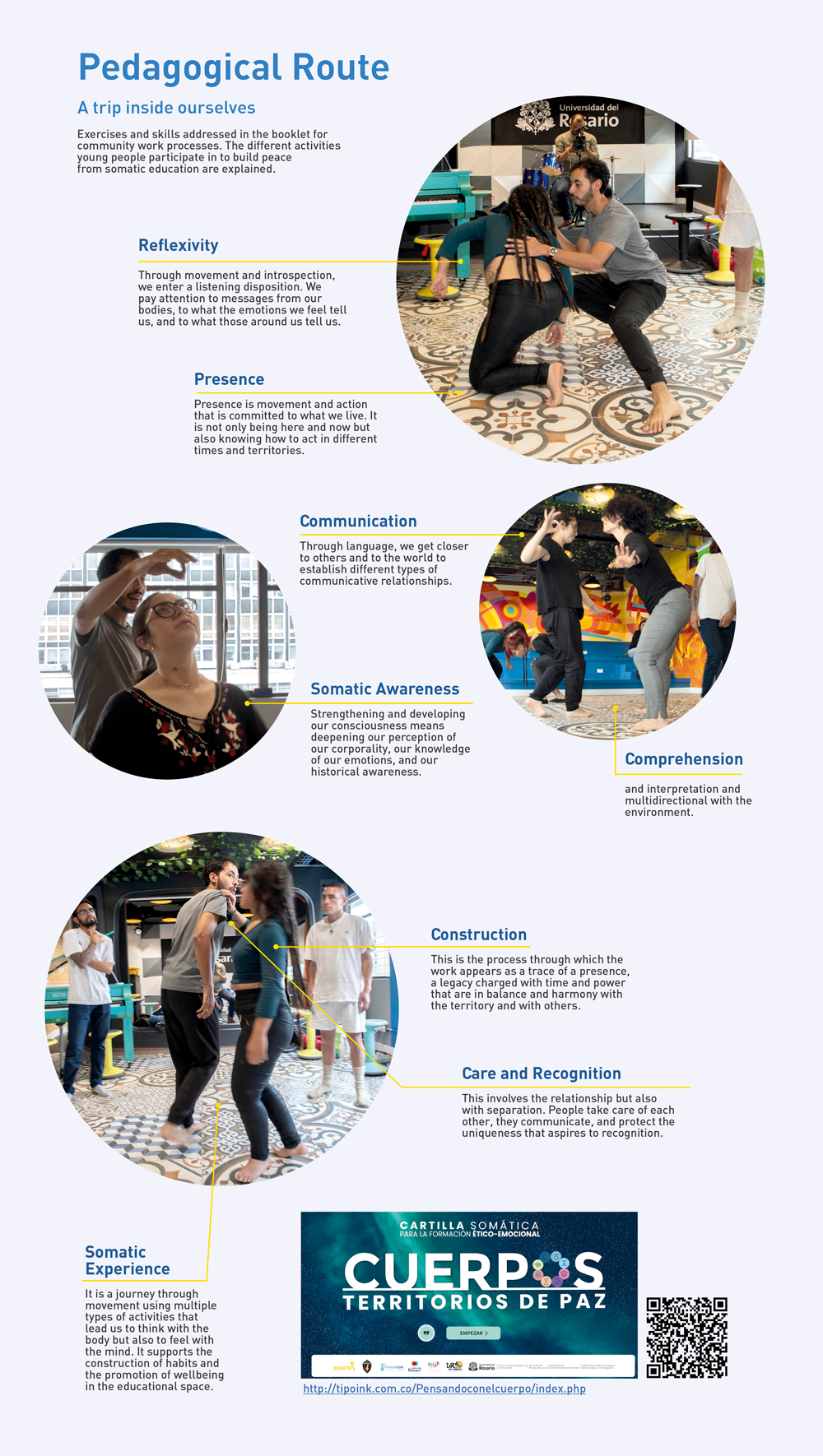The body: A system in which thought and emotions converge
By: Lina María Leal Villamizar
Photos: Milagro Castro
Health and Wellness
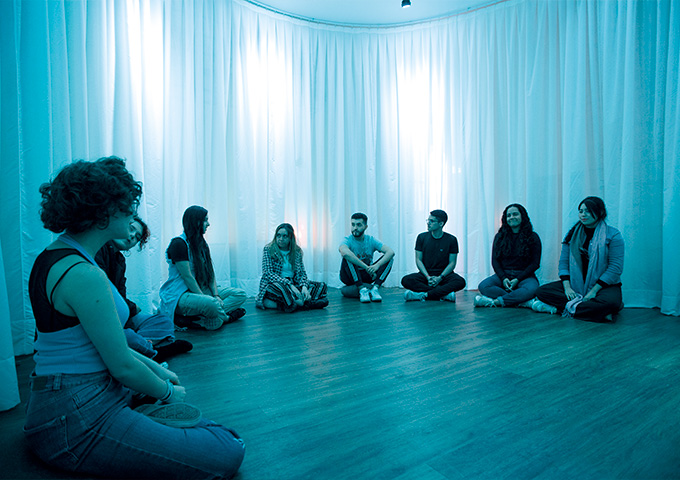
By: Lina María Leal Villamizar
Photos: Milagro Castro
We understand the body as an object that we have and not as something that we are,” says the professor at the Universidad del Rosario and student psychologist David Roberto González Rodríguez, who, along with a group of researchers from different departments and with the support of Welfare Deanship (DMU), has been interested in reconsidering the role of the body, as well as that of the mind and emotions, in the educational setting.
Traditionally, the body has been considered a vehicle of existence and motion, waiting for the mind to think, arrange, and learn. In addition, another differentiation has been made: as if they were taking different paths, on the one hand, the rational (with the knowledge), and on the other, the emotional (with the personal, the individual, and the intimate).
“The latter (the emotional) has not been considered serious and important enough to dedicate time and effort to it in university life,” says Dr. Rafael Bisquerra, President of the International Network of Emotional Education and Well-being (Rieeb). “However, there are university students who suffer from anxiety, stress, depression, suicidal ideation, drug use, or violence. People with university education are not ‘vaccinated’ against these risks,” he adds.
Since 1946, the World Health Organization (WHO) has declared health as a “state of complete physical, mental, and social well-being, and not merely the absence of affects or illnesses.” This was confirmed in 2020 with the celebration of World Mental Health Day, when it was stated that “there is no health without mental health.” Taking care of the mind, and with it the integrality of health, is increasingly recognized and necessary.
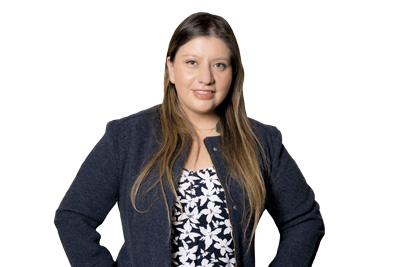
Dr. Viviana Sandoval Sánchez mentions the importance of “seeing the patient as a ‘whole,’ as something comprehensive and not only for its parts, organs or symptoms.”
Since 2019, Dr. Viviana Angélica Sandoval Sánchez, at the Quinta de Mutis campus, worked with program students from the Department of Medicine and Health Sciences, as well as the Faculty of Natural Sciences. For her, the important thing is “seeing the patient as a ‘whole,’ as something comprehensive and not just by parts, organs, or symptoms.”
As she explains, her office frequently receives cases of students with, for example, abdominal pain that leads to gastritis. And on several occasions when she asked about the relationship of the symptoms with the patients’ eating habits, she found that they had only eaten fast food in the last few days, because they were away from their caregivers or did not have the opportunity to cook for themselves. When asked how that situation makes them feel, the most repeated word in their responses was: “sad.”
According to the doctor, treating “the body” exclusively with a medication for gastritis would not remedy the root cause of this type of disease, as they are linked to the mental, social, or emotional situation of the patients. Hippocrates already said: “It is more important to know what kind of person has a disease than what kind of disease a person has.”
The physical and mental health connection
In 2019 and 2020, Dr. Sandoval joined Dra Heidy Tatiana Bacca to assess the presence and relationship between physical illnesses and mental health in the student community. They began by researching what had been studied and written about it in Colombia and around the world. Subsequently, the researchers created a survey aimed at local students who already had an established assessment of physical illness or who were asked what type of ailment they had.
They received 126 responses of which 45 percent corresponded to the respondents’ indication of presenting some mental health condition. Among them, anxiety was the most frequent followed by depression.
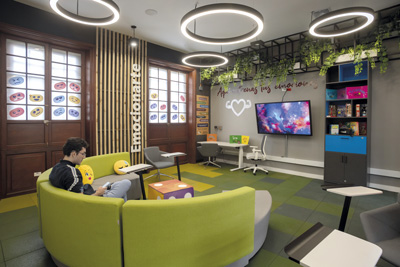
At the University, they have numerous spaces dedicated to “thinking about the body” (one invitation to body, emotional y political motion to raise awareness of relationships and generate transformative experiences) in which more and more teachers, staff, and students participate.
Furthermore, 72 percent of the students in the sample confirmed they suffer from physical illnesses such as gastritis, migraine, dermatitis, or constipation. “All of these organic diseases can be impacted or exacerbated by psychosocial factors that increase the burden of disease by increasing the risk of disease by increasing the intensity or frequency of symptoms,” argue Sandoval and Bacca, adding that this may also reflect the existence of a mental condition. According to the WHO and the research of the Rosario professors, for the total population, lifestyle factors explain up to 70 percent of the burden of disease.
Sandoval and Bacca also wondered whether there was a temporal relationship between diagnosing mental illness and physical illness. Fifty-seven percent of the respondents were diagnosed with both mental and physical illness around the same time, with an interval of approximately three months between each diagnosis; 32 percent were first diagnosed with the mental illness and then with the physical illness; while for 7 percent it was the other way around, first diagnosed with the physical illness and then with the mental illness.
“Our university student population is definitely carrying the burden of disease in the physical and emotional spheres, and we must continue to make great efforts to treat the mindbody binomial integrally,” Sandoval and Bacca conclude.
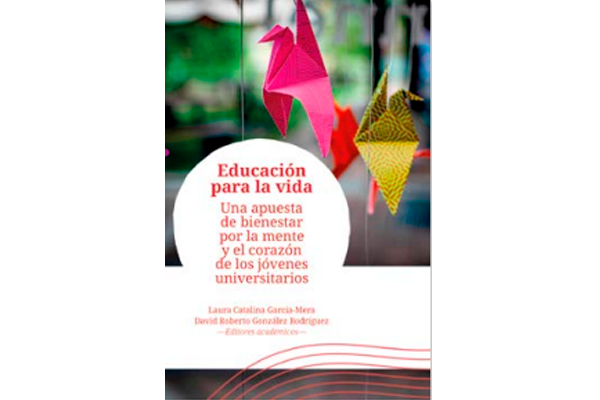
The book Life Education proposes a series of 12 chapters that reflect on the wellbeing of the mind and emotions of Young university students.
All these results are part of the Connecting physical and mental health chapter from the book Educación para la vida, from the Universidad del Rosario (2022). In this publication, the researchers state that if a patient requests a consult for a condition, in addition to the risk factors for its development, there may be some other underlying disease or cause that generates it.
That is why they increasingly work hand in hand with the areas of psychology, psychiatry, and social work, among others, in the promotion of health, but above all in disease prevention. “All of our activities are and will continue to be planned with the objective of building spaces and experiences for the student and transmitting a message that impacts their quality of life in a positive way and that not only promotes their physical health, but also their mental health,” they say.
Psychologist and Researcher David González prefers not to differentiate between the physical and the mental. For him, the contributions of Philosopher René Descartes (“I think, therefore I am,” in the Discourse of the method, 1637) helped explain the idea that we have something called “mind” that is distinct from what we call “body.”
“We are rather sentient bodies (closest translation of the Greek soma) that we define complex structures that describe our being in terms of a sensory, emotional, cognitive, spatial, cultural, and historical plurality,” González says, “and therefore somatic education - the use of holistic, body-based approaches to bring about personal transformation - seeks to make people understand that it is not only the mind that needs to be trained. The body needs to be trained and has a lot to contribute!”
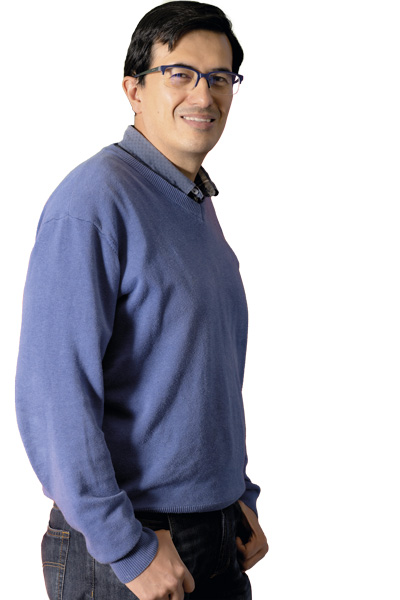
“We are more like sentient bodies that we define as complex structures that describe our being in terms of a sensory, emotional, cognitive, space, culture and historical plurality,” notes psychologist David González.
Under the leadership of Professor Israel Cruz Velandia, a renowned physiotherapist from the Universidad del Rosario who passed away in 2022, González and researchers Christian Rubiano and Laura Vanessa Rodríguez began to study thinking from the body and emotions in 2019 (See article: The language of movement and emotions as a conflict-transforming focus, in Advances in Science). To do so, they included concepts of philosophy, pedagogy, psychology, and psychoanalysis that allowed them to position the body as a learning vehicle to approach a state of wellbeing.
During the following two years, they held discussions in workshops and group practices that enabled the participating members of Rosario to break out of the passive roles that often occur in classrooms, corridors, and offices. Gradually, they have become more and more popular. Not only have more researchers joined, but numerous spaces dedicated to “thinking with the body” (an invitation to bodily, emotional, and political movement to raise awareness of relationships and generate transformative experiences) have also emerged, in which more and more teachers, staff, and students are participating.
González and his team prepared the chapter Somatic education for ethical and emotional training, which also forms part of the Life Education publication, for which the psychologist also served as editor. There, the team described the lessons learned from the project and proposed a formative route as a journey. “There are three moments in which people evolve: the journey, the sense, and the trans formation. All three comprise a series of processes in this route of growth and formation,” explains the researcher.
In the first moment, the person is asked to review themselves and think about how they relate to their body and to the body of others. The second reflects on understanding and meaning: how do you inhabit the world from a full and conscious presence? With all of the above, we reach the last step, transformation, when we must enable the unleashing of motion, changes in habits, and ways of seeing and valuing daily life. “To build is to take care of ourselves, to arrange new senses and project them in our body, in the spaces that surround us and together with others,” they point out.

“Three moments in which people evolve: the journey, the sense and the transformation. The three comprise a series of processes in this route of growth and of training”
It is expected that the path will lead to a strong focus on action. And with this active learning of the body, as well as a greater awareness of its management, one becomes more aware that there are others with whom one engages in relationships. “Humanism is an invitation to recognize ourselves as equals, to place ourselves on the same level. In this way, movement can help to reflect on connections with others, on how one can live in joint motion with others.”
Understanding that every action has an impact around it that connects human beings with the world, where there are other bodies they can connect with. “If we all think of ourselves as part of something else and learn to relate to each other better, we can also make this world more meaningful and enjoyable to live in,” the researcher concludes.
